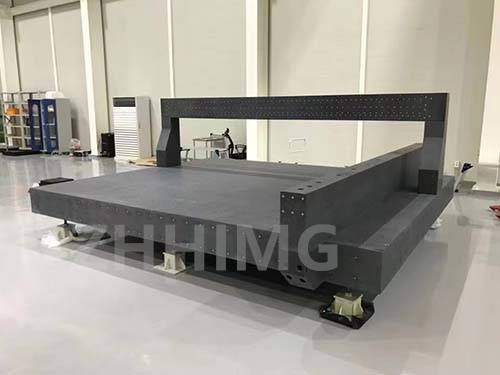Granite precision platform and marble precision platform: differences in material characteristics, use scenarios and maintenance requirements
In the field of precision measurement and processing, granite precision platform and marble precision platform are indispensable and important tools. Although the two are similar in name, they have significant differences in material characteristics, usage scenarios, and maintenance requirements.
Differences in material characteristics:
First of all, from the material point of view, granite belongs to igneous rocks, mainly composed of quartz, feldspar and mica and other minerals, formed after hundreds of millions of years of geological processes, with extremely high hardness and wear resistance. Its Mohs hardness is usually between 6-7, which allows the granite platform to maintain high accuracy under heavy loads and is not susceptible to erosion by external factors. In contrast, marble is a metamorphic rock, formed by recrystallization of limestone under high temperature and pressure, although it has the same beautiful texture and luster, but its hardness is lower, Mohs hardness is generally between 3-5, so it is more vulnerable to impact and wear.
In addition, the granite platform also has the characteristics of precision structure, uniform texture and good stability. After long-term natural aging, the internal stress of granite is completely disappeared, the material is stable, and there is no significant deformation due to temperature changes. Although marble also has a certain stability, but its high hygroscopicity, high humidity is easy to deform, which to a certain extent limits its scope of use.
Differences in usage scenarios:
Due to the different material characteristics, there are also obvious differences between the granite precision platform and the marble precision platform in the use scenario. Because of its high strength, high hardness and excellent stability, granite platforms are often used in measurement and processing tasks that require heavy loads and high precision, such as the base and guide rail of precision machine tools. The marble platform, because of its beautiful texture and luster, is more suitable for occasions where there are certain requirements for beauty, such as the processing and display of artworks.
Differences in maintenance requirements:
In terms of maintenance, due to the different material characteristics of the two, its maintenance requirements are also different. The granite platform is relatively simple to maintain because of its characteristics of wear resistance, corrosion resistance and not easy to deformation. Just clean the dust and debris on the surface regularly and keep it clean and dry. The marble platform, because of its high moisture absorption, needs to pay special attention to moisture and deformation. In an environment with high humidity, take moisture-proof measures, such as using a dehumidifier to reduce the ambient humidity. At the same time, the impact and scratch on the marble platform should also be avoided during use, so as not to affect its measurement accuracy and service life.
In summary, there are significant differences between granite precision platform and marble precision platform in material characteristics, use scenarios and maintenance requirements. Understanding these differences helps us to better select and use these precision tools to meet the needs of different occasions.
Post time: Aug-05-2024

